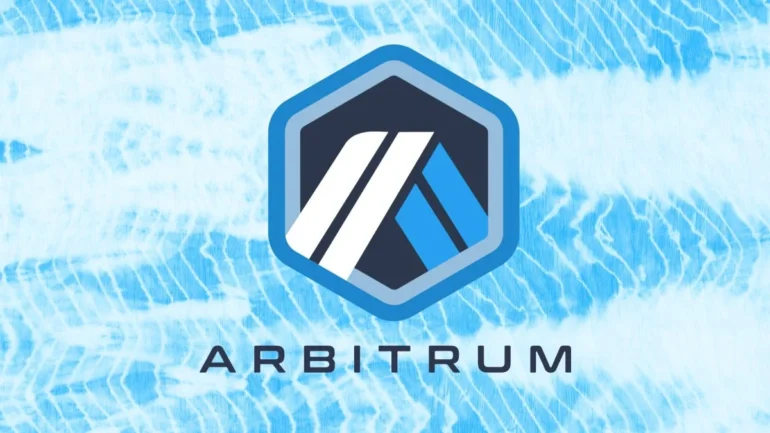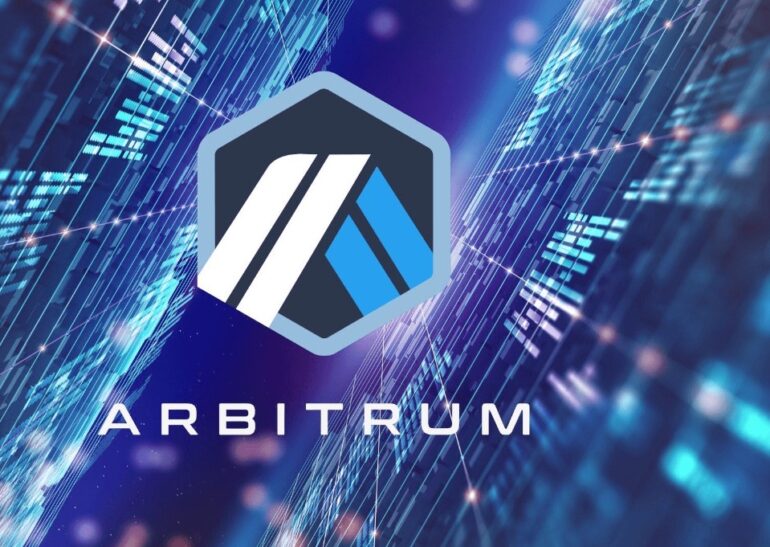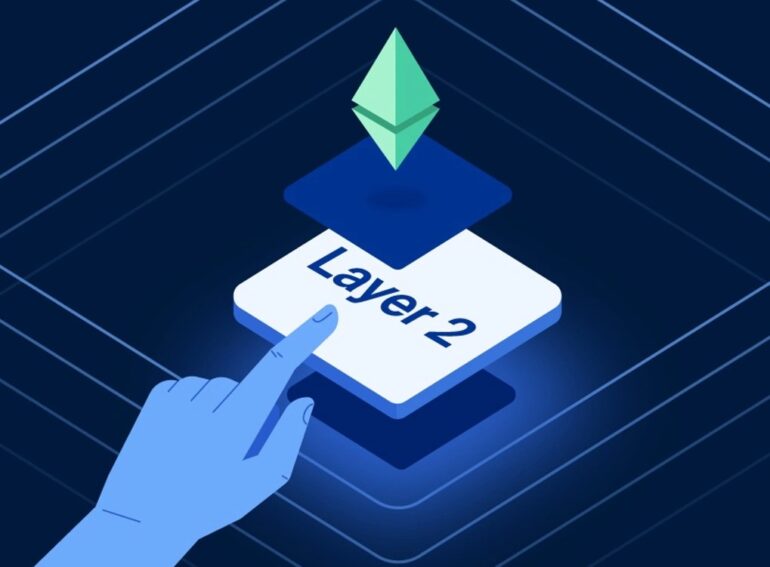
In the rapidly evolving world of blockchain technology, scalability remains one of the most pressing challenges faced by Ethereum and other prominent networks. As decentralized finance (DeFi) applications and non-fungible tokens (NFTs) gain widespread adoption, the need for efficient, low-cost transactions has become increasingly critical.
Enter the Arbitrum bridge, a groundbreaking solution that addresses these scaling issues while maintaining the security and decentralization that are hallmarks of the Ethereum ecosystem.
This comprehensive article delves into the intricacies of the Arbitrum bridge as offered by DefiWay, exploring its functionality, benefits, and potential impact on the broader blockchain landscape.
We’ll examine how this innovative technology is transforming user interactions with decentralized applications, paving the way for a more scalable and efficient future for Ethereum-based projects. Along the way, we’ll also touch upon the role of platforms like DefiWay in leveraging this technology to enhance user experiences in the DeFi space.
Understanding Layer 2 Scaling and Arbitrum
Before we dive deep into the Arbitrum bridge, it’s essential to understand the concept of Layer 2 scaling and Arbitrum’s role in this technological advancement. Layer 2 refers to a secondary framework or protocol built on top of an existing blockchain system. These solutions aim to address the scalability issues of the main chain (Layer 1) by handling transactions off-chain while still leveraging the security of the underlying blockchain.
Arbitrum, developed by Offchain Labs, is one such Layer 2 scaling solution designed specifically for Ethereum. It utilizes optimistic rollups, a technology that allows for the execution of smart contracts and transactions outside of the main Ethereum chain. This approach significantly reduces gas fees and increases transaction throughput, addressing two of the most pressing issues facing the Ethereum network today.
The Arbitrum Bridge ─ A Deep Dive
At the heart of Arbitrum’s functionality lies the Arbitrum bridge, a critical component that facilitates the seamless movement of assets between Ethereum’s main network (Layer 1) and the Arbitrum ecosystem (Layer 2). This bridging mechanism is fundamental to Arbitrum’s ability to offer enhanced scalability while maintaining compatibility with the Ethereum mainnet.
How the Arbitrum Bridge Functions
The Arbitrum bridge operates through a series of smart contracts and protocols that ensure the secure and efficient transfer of assets between layers. Here’s a detailed look at how the process works:
- Deposit initiation ─ When a user wants to move assets from Ethereum to Arbitrum, they initiate a deposit transaction on the Ethereum mainnet. This transaction interacts with a smart contract that acts as the entry point to the Arbitrum network.
- Asset locking ─ The deposit transaction locks the user’s assets (ETH or ERC-20 tokens) in the Ethereum smart contract. This step ensures that the assets are securely held on the mainnet while their equivalent value is minted on Arbitrum.
- Event emission ─ Once the assets are locked, the Ethereum smart contract emits an event that is picked up by Arbitrum’s validators.
- Arbitrum-side minting ─ The Arbitrum network, upon detecting the deposit event, mints an equivalent amount of assets on its Layer 2 chain. These assets are then credited to the user’s Arbitrum address.
- Confirmation and availability ─ After a short confirmation period, the assets become available for use within the Arbitrum ecosystem. Users can now interact with dApps, transfer tokens, or perform other transactions on Arbitrum with significantly lower fees and faster confirmation times.
- Withdrawal initiation ─ When a user wishes to move assets back to Ethereum, they initiate a withdrawal request on the Arbitrum network.
- Challenge period ─ Arbitrum implements a challenge period during which the withdrawal request can be contested if there’s suspicion of fraud. This security measure ensures the integrity of the bridging process.
- Asset release ─ After the challenge period expires without any valid disputes, the original assets are released from the Ethereum smart contract and returned to the user’s Ethereum address.
This bidirectional bridging process ensures that assets can move freely between Ethereum and Arbitrum while maintaining a 1:1 peg and preserving the overall security of the ecosystem.
Benefits of the Arbitrum Bridge

The Arbitrum bridge offers a multitude of advantages that make it an attractive option for users, developers, and projects in the blockchain space:
- Drastically reduced gas fees ─ By processing transactions on Layer 2, users can enjoy significantly lower gas fees compared to transacting directly on Ethereum. This cost reduction makes microtransactions and frequent trading economically viable.
- Increased transaction speed ─ Arbitrum’s optimistic rollup technology allows for near-instant transaction confirmations, greatly improving the overall user experience and enabling more responsive dApps.
- Ethereum compatibility ─ The bridge maintains full compatibility with Ethereum, allowing existing smart contracts and dApps to be easily ported to Arbitrum with minimal modifications. This compatibility ensures that developers can leverage their existing knowledge and tools.
- Enhanced scalability ─ By offloading a significant portion of transactions to Layer 2, Arbitrum helps alleviate congestion on the Ethereum network, contributing to improved scalability for the entire ecosystem.
- Robust security ─ The Arbitrum bridge leverages Ethereum’s battle-tested security model, ensuring that assets are protected even as they move between layers. The challenge period for withdrawals adds an extra layer of security against potential attacks.
- Improved liquidity ─ By enabling fast and cheap transfers between Ethereum and Arbitrum, the bridge helps maintain liquidity across both layers, benefiting DeFi protocols and users alike.
- Seamless user experience ─ For end-users, the bridging process is designed to be as seamless as possible, often integrated directly into dApp interfaces for a smooth transition between layers.
Use Cases and Real-World Applications

The Arbitrum bridge opens up a wide range of possibilities for various blockchain-based services and applications. Here are some key areas where this technology is making a significant impact:
- Decentralized finance (DeFi) ─ DeFi protocols, including decentralized exchanges, lending platforms, and yield farming services, can leverage Arbitrum to offer users lower fees and faster transactions while still tapping into Ethereum’s deep liquidity pools. This has led to the emergence of “L2 DeFi” ecosystems that mirror and enhance existing Ethereum-based services.
- Gaming and NFTs ─ Blockchain-based games and NFT marketplaces benefit greatly from Arbitrum’s lower transaction costs, making microtransactions and frequent trading more feasible. This has opened up new possibilities for game economies and digital art platforms.
- Decentralized autonomous organizations (DAOs) ─ DAOs can utilize Arbitrum to conduct governance processes, including voting and treasury management, with reduced costs and increased participation rates due to lower barriers to entry.
- Cross-chain interoperability ─ The Arbitrum bridge facilitates easier asset movement between different blockchain ecosystems, promoting greater interoperability in the crypto space. This is particularly valuable for projects looking to leverage the strengths of multiple networks.
- Dapp development ─ Developers can build and deploy scalable applications on Arbitrum while still benefiting from Ethereum’s robust developer tools and community support. This has led to an explosion of innovative dApps that were previously constrained by Ethereum’s limitations.
- Enterprise blockchain solutions ─ Businesses exploring blockchain technology can benefit from Arbitrum’s scalability and cost-efficiency, making it more feasible to implement large-scale blockchain solutions without prohibitive transaction costs.
One platform that has recognized the potential of Arbitrum’s technology is DefiWay. By integrating with the Arbitrum ecosystem, DefiWay is able to offer its users enhanced DeFi services with reduced fees and improved transaction speeds. This showcases how bridging technology can be leveraged to create more accessible and efficient financial products in the decentralized space.
Challenges and Considerations

While the Arbitrum bridge offers numerous benefits, it’s important to consider some of the challenges and potential risks associated with this technology:
- Security risks ─ Although the Arbitrum bridge is designed with robust security measures, any cross-chain bridge can potentially be a target for sophisticated attacks. Users should always exercise caution and follow best practices when transferring assets.
- Withdrawal delays ─ The security measures implemented in the withdrawal process, particularly the challenge period, can lead to delays when moving assets back to Ethereum. Users should be aware of these waiting periods and plan accordingly.
- Liquidity fragmentation ─ As more assets move to Layer 2 solutions like Arbitrum, there’s a risk of liquidity fragmentation across different platforms, which could impact overall market efficiency and potentially lead to price discrepancies between layers.
- Complexity for end users ─ While the Arbitrum bridge aims to simplify Layer 2 interactions, some users may find the process of moving assets between layers confusing or intimidating, potentially creating a barrier to adoption.
- Regulatory uncertainty ─ As with many emerging blockchain technologies, the regulatory landscape surrounding Layer 2 solutions and cross-chain bridges remains uncertain in many jurisdictions. This could potentially impact the long-term viability and adoption of such technologies.
- Centralization concerns ─ While Arbitrum strives for decentralization, some critics argue that Layer 2 solutions may introduce new centralization vectors, particularly in the early stages of development and adoption.
- Interoperability challenges ─ As multiple Layer 2 solutions emerge, ensuring seamless interoperability between different scaling solutions becomes increasingly important and potentially complex.
The Future of Arbitrum and Layer 2 Scaling

As Ethereum continues to grapple with scaling challenges, solutions like Arbitrum and its bridging technology are likely to play an increasingly important role in the blockchain ecosystem. The success of the Arbitrum bridge could pave the way for wider adoption of Layer 2 scaling solutions, potentially reshaping the way we interact with blockchain networks.
Looking ahead, we can expect to see further improvements and innovations in the Arbitrum ecosystem:
- Enhanced interoperability ─ Future developments may focus on improving cross-chain compatibility, allowing for seamless asset transfers between multiple Layer 1 and Layer 2 networks, and creating a more interconnected blockchain landscape.
- Simplified user experience ─ As the technology matures, we can anticipate more user-friendly interfaces and tools that make interacting with the Arbitrum bridge more intuitive for non-technical users, driving broader adoption.
- Increased dApp adoption ─ As more developers recognize the benefits of building on Arbitrum, we’re likely to see a growing ecosystem of dApps leveraging this scalable infrastructure, potentially leading to new and innovative use cases.
- Integration with traditional finance ─ The efficiency gains provided by Arbitrum could make blockchain technology more attractive to traditional financial institutions, potentially accelerating the adoption of DeFi solutions and bridging the gap between centralized and decentralized finance.
- Governance and decentralization ─ As the Arbitrum ecosystem grows, we may see the implementation of more robust decentralized governance mechanisms, allowing community members to have a greater say in the platform’s future development and ensuring long-term sustainability.
- Technological advancements ─ Ongoing research and development in areas such as zero-knowledge proofs and other cryptographic techniques could lead to even more efficient and secure bridging mechanisms in the future.
- Regulatory adaptation ─ As the regulatory landscape evolves, we may see Layer 2 solutions like Arbitrum working closely with regulators to ensure compliance while maintaining the core principles of decentralization and user autonomy.

Conclusion
The Arbitrum bridge represents a significant leap forward in addressing the scaling challenges faced by Ethereum and other blockchain networks. Providing a secure and efficient means of moving assets between layers, opens up new possibilities for developers and users alike, enabling faster, cheaper transactions without sacrificing the security and decentralization that make blockchain technology so powerful.
As platforms like DefiWay continue to integrate with Arbitrum and similar Layer 2 solutions, we can expect to see a new wave of innovation in the blockchain space. The Arbitrum bridge is not just a technological solution; it’s a gateway to a more scalable, efficient, and accessible blockchain future.
While challenges remain, the potential benefits of this technology are clear. As the ecosystem matures and more users and developers embrace Layer 2 solutions, the Arbitrum bridge stands poised to play a crucial role in shaping the future of decentralized finance, gaming, NFTs, and countless other blockchain applications.
In this rapidly evolving landscape, staying informed about developments in Layer 2 scaling and bridging technologies like Arbitrum will be crucial for anyone looking to navigate the exciting world of blockchain and cryptocurrencies. As we move forward, the Arbitrum bridge and similar innovations will continue to push the boundaries of what’s possible in the realm of decentralized technologies, bringing us closer to a truly scalable, efficient, and inclusive blockchain ecosystem.
The journey of the Arbitrum bridge is just beginning, and its impact on the blockchain industry promises to be profound and far-reaching. As we witness the ongoing evolution of this technology, one thing is clear: the future of Ethereum scalability is bright, and solutions like the Arbitrum bridge are lighting the way forward.
